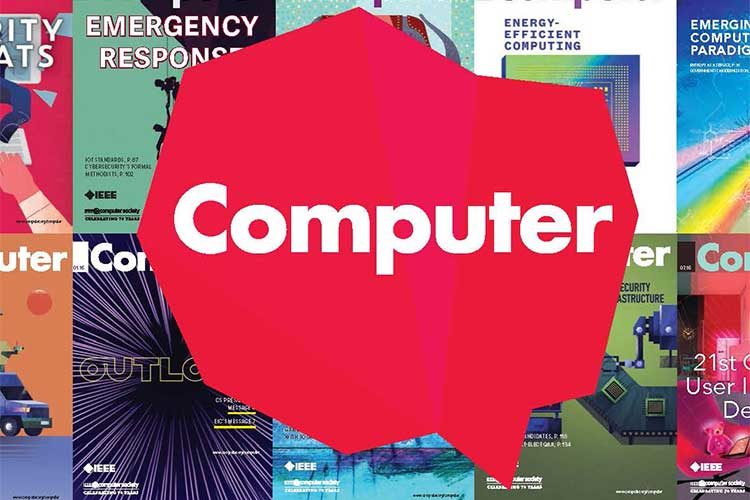Full papers: 15 September 2017
Publication date: April 2018
Computer plans an April 2018 special issue on the rapidly emerging area of mobile and embedded deep learning.
In recent years, breakthroughs from the field of deep learning have transformed how sensor data from cameras, microphones, and even accelerometers, LIDAR, and GPS can be analyzed to extract the high-level information needed by the increasingly commonplace examples of sensor-driven systems that range from smartphone apps and wearable devices to drones, robots, and autonomous cars.
Today, the state of the art in computational models that, for example, recognize a face in a crowd, translate one language into another, discriminate between a pedestrian and a stop sign, or monitor the physical activities of a user, are increasingly based on deep-learning principles and algorithms. Unfortunately, deep-learning models typically exert severe demands on local device resources, which typically limits their adoption in mobile and embedded platforms. As a result, in far too many cases, existing systems process sensor data with machine learning methods that were superseded by deep learning years ago.
Because the robustness and quality of sensory perception and reasoning is so critical to mobile and embedded computing, we must begin the careful work of addressing two core technical questions. First, to ensure that the sensor-inference problems that are central to this class of computing are adequately addressed, how should existing deep-learning techniques be applied and new forms of deep learning be developed? Meeting this challenge involves a combination of learning applications—some of which are familiar to other domains (such as in processing image and audio), as well as those more uniquely tied to wearable and mobile systems (such as activity recognition). Second, for the compute, memory, and energy overhead of current—and future—deep-learning innovations, what will be required to improve efficiency and effectively integrate into a variety of resource-constrained platforms? Solutions to such efficiency challenges will come from innovations in algorithms, systems software, and hardware (such as in ML-accelerators and changes to conventional processors).
In this special issue of Computer, the guest editors aim to consider these two broad themes, which drive further advances in mobile and embedded deep learning. More specific topics of interest include but are not limited to
- Compression of deep model architectures;
- Neural-based approaches for modeling user activities and behavior;
- Quantized and low-precision neural networks (including binary networks);
- Mobile vision supported by convolutional and deep networks;
- Optimizing commodity processors (GPUs, DSPs etc.) for deep models;
- Audio analysis and understanding through recurrent and deep architectures;
- Hardware accelerators for deep neural networks;
- Distributed deep model training approaches;
- Applications of deep neural networks with real-time requirements;
- Deep models of speech and dialog interaction or mobile devices; and
- Partitioned networks for improved cloud- and processor-offloading.
Only submissions that describe previously unpublished, original, state-of-the-art research and that are not currently under review by a conference or journal will be considered.
There is a strict 6,000-word limit (figures and tables are equivalent to 300 words each) for final manuscripts. Authors should be aware that Computer cannot accept or process papers that exceed this word limit.
Articles should be understandable by a broad audience of computer science and engineering professionals, avoiding a focus on theory, mathematics, jargon, and abstract concepts.
All manuscripts are subject to peer review on both technical merit and relevance to Computer’s readership. Accepted papers will be professionally edited for content and style. For accepted papers, authors will be required to provide electronic files for each figure according to the following guidelines: for graphs and charts, authors must submit them in their original editable source format (PDF, Visio, Excel, Word, PowerPoint, etc.); for screenshots or photographs, authors must submit high-resolution files (300 dpi or higher at the largest possible dimensions) in JPEG or TIFF formats.
Authors of accepted papers are encouraged to submit multimedia, such as a 2- to 4-minute podcast, videos, or an audio or audio/video interview of the authors by an expert in the field, which Computer staff can help facilitate, record, and edit.
Questions?
Please direct any correspondence before submission to the guest editors:
Nic Lane, University College London and Nokia Bell Labs (nic.lane@cs.ucl.ac.uk)
Pete Warden, Google Brain (petewarden@google.com)
For author guidelines and information on how to submit a manuscript electronically, visit www.computer.org/web/peer-review/magazines. For full paper submission, please visit mc.manuscriptcentral.com/com-cs.


